The argument for using scientific names (against using common names alone) in sourcing and discussing plants.
Read moreScientific names rule. Here's why
common names suck.png
Your Custom Text Here

common names suck.png
The argument for using scientific names (against using common names alone) in sourcing and discussing plants.
Read moreI've been keeping busy in what feels like a perfect storm of absolutely inexcusable (insert many cuss words) BAD "gardening". I don't know what the heck happened, but the stars aligned and I've been doing nothing but evaluating problems, recommending that gardeners get fired, and interviewing new gardeners. I have three current projects dealing with this at the same time, and today a project I haven't even started working on yet became the fourth.This morning's text from my new client brought such sad news. She had the most charming Hong Kong Orchid (Bauhinia blakeana) tree and came home from work to find that it was absolutely butchered by the "gardeners". They were not directed to prune the tree, and I have to tell you - this has happened to more than one client where someone has butchered a tree without approval or permission! My client loves this tree and I'm working on finding someone to help us in directing its recovery from the abuse.Below you'll see the few photos I have of the tree - I was so charmed by it, I can't figure out why I didn't get better photos.It used to overhang the front patio that the living room looks out on - is focused on - but now I'm told that you can't even see the tree from inside anymore. If you are sensitive to gorey pictures, now is the time to avert your eyes:I warned you, don't say I didn't.SO - what the hell? Thing is, any idiot can call him/herself a gardener. There's no training required, and most people are happy enough to have someone else do the mowing that they don't worry about it - how hard can it be? But what many don't think about until it is too late is that those specimen plants can be responsible for a good up-tick in your property's valuation. New trees don't add value, but healthy, mature ones totally do!I will post again soon about some of the other issues with gardeners - but for now, may I just list these few things that every property owner should know:An Arborist is an educated, certified person who is held to certain standards of care and who can be reported for not upholding those standards. Hiring a tree service company does not mean an Arborist will be involved in your project, nor does it mean you'll get qualified advice. If you have an important tree, make sure you protect it with advice and evaluations from someone qualified to give them.A Consulting Arborist can help you diagnose problems or evaluate a tree, the American Society of Consulting Arborists has a great web page that lets you search for one near you: ASCA. They aren't the folks with the clippers, but they can tell you if a tree is in good health and stuff like that.There is no specific qualification for someone to do pruning. However, some arborists do work in hands-on ways or work for companies that do. To find these kinds of people, check out the International Society of Arboriculture, or ISA. The difference being arboriCULTURE as opposed to arborIST.The moral of this story is that everyone who hires or works with a gardener or a landscape maintenance company should have the conversation about doing unauthorized work. This is a huge no-no, and I'd like to make a law about it, but until that happens, we've got to look out for the trees ourselves. Well, us and the Lorax anyway.
My folks visited me about six months ago or so. While reading my draft portfolio booklet, dad started laughing. He'd read where I stated that I start every design with a pen. 'No you don't, you have a drawing tablet! You draw in the computer!' says my dad. No, I don't, but I thought it was a funny assumption and so here we are talking about it.Here's the thing - using technology is lovely when you know what you want it to do, but when you have no idea, when you're imagining stuff, using Photoshop with a tablet and stylus is not the most direct route from the brain. You have to push buttons, set layers, import files, etc. Forget THAT! For me, using a pen is the shortest distance between creative thought and seeing it with your eyes (on the page).Take for example a current design project in Southern California, it is for the residence of an Architect I worked with years ago:I typically sit in a coffee shop and doodle for a while while studying site photos to really wrap my head around the issues of the site and try out various ways of shaping the space, fitting in uses, etc. I use a printed base plan under tracing paper, my favorite Japanese ballpoint pens, and a latte (in reverse order). The first round is not to scale, exploring idea after idea, small about the size of an index card.Sometimes I do studies that try to fit certain ideas to the site regardless of anything, and these usually look pretty nuts, especially when I don't re-draw the parts I've decided against:After generating several concepts, I refine a few ideas into what I still call conceptual design, and I limit myself to 3-4 per area max. In this case, there's a front garden and a rear garden. Even now, nothing is really measured, it is all eyeballed and still very sketchy. Notes around the edges help me remember the images I had in my mind's eye for plants and other materials. I have to make some assumptions about the clients' lifestyle, and sometimes I suggest things they have not thought of - like what if they said they want the rear garden to be for kids' play but the front is actually a better size for it....(like in this garden).... the interview process can provide a lot of information, but you really can't explore all the possibilities in an interview or two, and it helps to see ideas drawn when discussing them.At this point, I sometimes send it to the client for input. Below are the finalists for the front garden:and here (below) are the finalists for the rear garden:Some clients enjoy working at this sketchy loose level, and this client is definitely one of them. I'm honored to be designing the home landscape for his family, I hold his abilities in the architecture world in high regard and I know he and his wife have great taste. However, there are clients for whom it is more appropriate to narrow things down to one or two ideas and do a much more formal, complete presentation. I like both approaches, but for sure, this one allows for the client to have much more input at the very early stages.SO - which will they choose? We'll see.
I think I did it right. I started designing gardens before I knew that was what I would "grow up" to do. My first forays into site design as a kid included a fantasy plant nursery, pet store, and flower shop. My parents' back yard was the subject of many site plans as well, though they didn't implement my thoughts.I earned my BLA (Bachelors of Landscape Architecture, a 5 year degree), got my first "real" job, and after a few years, began taking my own projects on the side. This year I started teaching and finally went full-time as my own boss. I have essentially spent all my free time for the last mumble-mumble years absorbed in design, gardens, plants, and everything related.You would think that I would have no shortage of beautiful built projects to share online, adding new ones all the time. Below is part of why I don't put a full body of work in public online places:Naturally, many of the projects I've worked on have been with former employers. Many of them are my work or at least partly so, but the former employer owns the intellectual property. I can put the work I did in my own portfolio, that is industry standard, but it is not kosher to put that stuff on my own website or blog to promote myself apart from promoting the company I worked for at the time. In addition to that, I have agreements with some former employers that state I won't put anything online that came from my employment with them, and some clients and I have similar agreements. Not marketing with clients' projects can be limiting in this age where everything is available at a click, but there ya go.I respect the wishes of my clients and some of them are more particular about their privacy than others. I never post or put online anything that a client would like to keep private. For some of them, that is everything. The work I do is often someone's home, and I totally get wanting to keep home private!Additionally, a garden is never done. The design work is only a portion of making a quality outdoor environment. A great many projects are phased in for budget reasons or other limitations (this can take years!), and it also takes time for the plants to grow in. In a recent post on a project in Italy, you can see that the photos I posted span about 2 years - after two years, that garden is just getting to the point where it looks good enough to take photos and post them. If I had posted it too early, it would not have had the same ability to represent what the intention was in the first place.I am incredibly fortunate to work on amazing projects with amazing people - whether their own home, a rental, or a commercial or institutional project, there's opportunity for discovery, beauty, and environmental benefits all around.... so am I still doing it right? I sure hope so.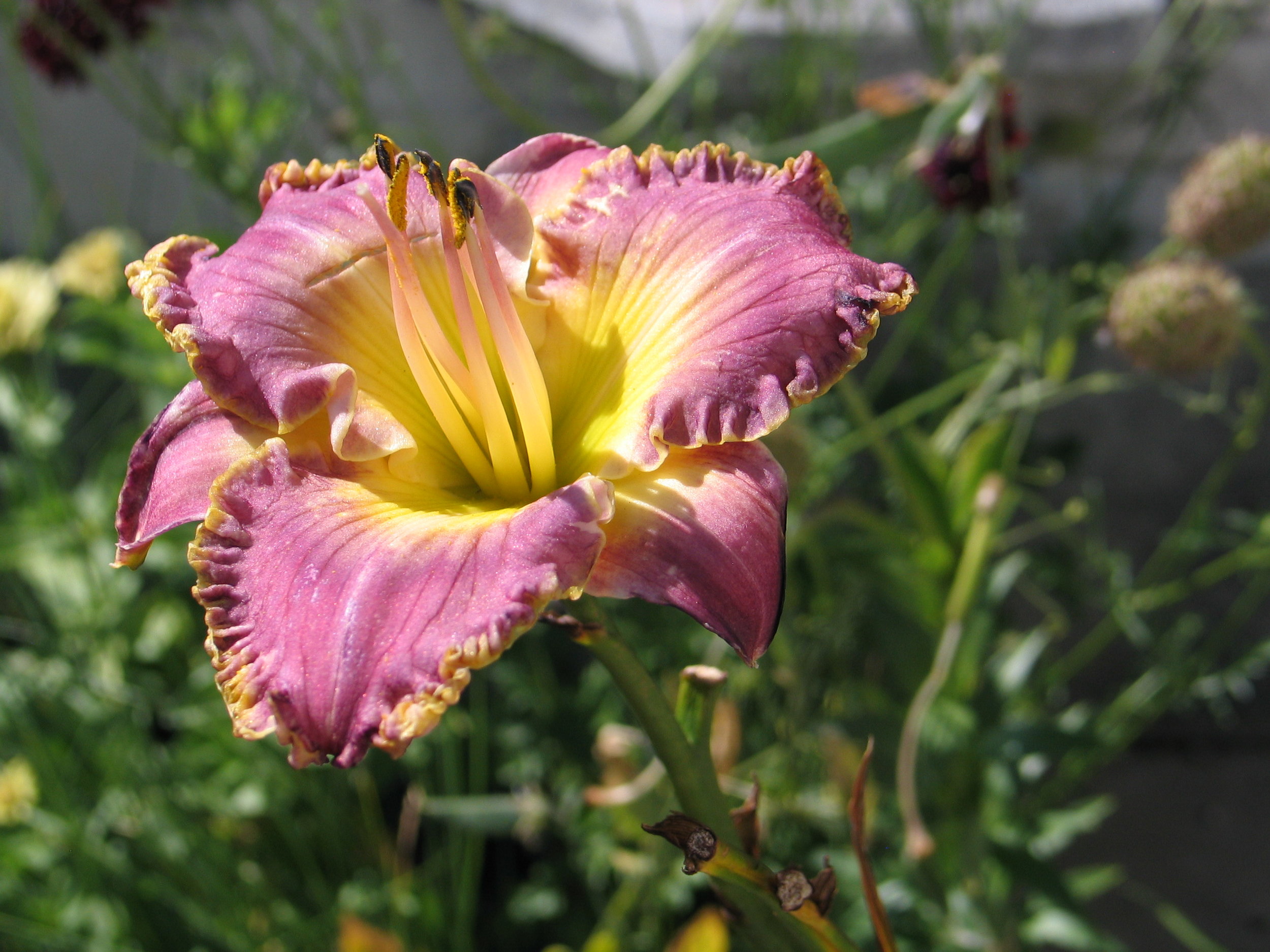

2014 June
While I was away neglecting my modern web-presence-building duties, I enjoyed working on a particularly wonderful little project.... a Bed and Breakfast in Italy! I have never been to Italy, but when my good friend and talented architect Glenda Flaim showed me her work on Casa Incantata, I asked if I could take a stab at the planting design which had yet to be finalized. Neither of us had any idea what would happen. Come on, what do I know about plants in Italy?! Niente. The way we worked around that, and got the garden done was a genuinely collaborative effort involving Glenda, the Owners, their gardener, some dutch visitors, and me:First, Glenda sent me a photo of the site with notes (in green) on her thoughts for the planting:We chatted about the decisions on the photo - why the hedge, what is the lawn for, stuff like that. I studied snapshots of the building and tried to imagine what it would be like to be there in person. Glenda mentioned that the house had just won a national award for sustainable architecture, and was photographed soon after I started noodling with the design of the garden on paper. You can see pre-garden professional architectural photos here and here. She sent me a computer drafted file of the site and I gathered photos of plants that came to mind.I started the planting design in June 2012:I mapped out the planting design in areas with palettes. The areas got names: there was "lawn", "spicy", "meadow", and "hedge". I wrote a description of how each of these areas would be different from each other, what forms and colors I was trying to emphasize, and what colors I wanted to avoid entirely. I wrote out how these plants would change with the seasons and the desired effects. With lists of plants and their written intentions, the memos were translated into Italian and back into English through Glenda.The Owners and their gardener started looking for the plants and sent word back what was available and not, and we figured out plants that might work instead. More memos handling spacing and layout were translated back and forth, plant research was done on both continents. Plants were purchased and installed as they were found; this took a few seasons to finish. Some were purchased in Italy, some shipped from the U.S., and the last, elusive bulb was a gift from some visitors from Holland who learned of the missing bulb in discussions of the garden during their stay.Over the last 2 years, I've gotten a couple of photos a season so I could see how the garden was doing. They had wasted no time getting plants in the ground. Later that same year (fall 2012), the lawn (Hernaria glabra) which also extended between the pavers, was getting its start:By the following Spring (2013) it had filled-in very nicely!The other plants were coming along too:By that Summer, you could see the different zones expressing themselves:And just last month, I got another update:It is challenging to know how a garden will look when you're designing it, and there were many anxious moments when I knew they were investing in my advice and I could only hope that the Owners would like the results. I'm not sure it is possible to tell if the image in my head matches what the garden will become. I can't know ahead of time if the Owners will like what the garden will become, and yet it is dependent on them and everyone who takes care of it to continue to support the design's intention as the garden is maintained.I am finally able to share (two years later) how things are going here in this post. I can also share that the owners are very happy with their garden, and conveyed to me this sentiment:
Il giardino che ho sempre sognato!!!
(The garden I have always dreamed about!!!)
I couldn't have asked for more.
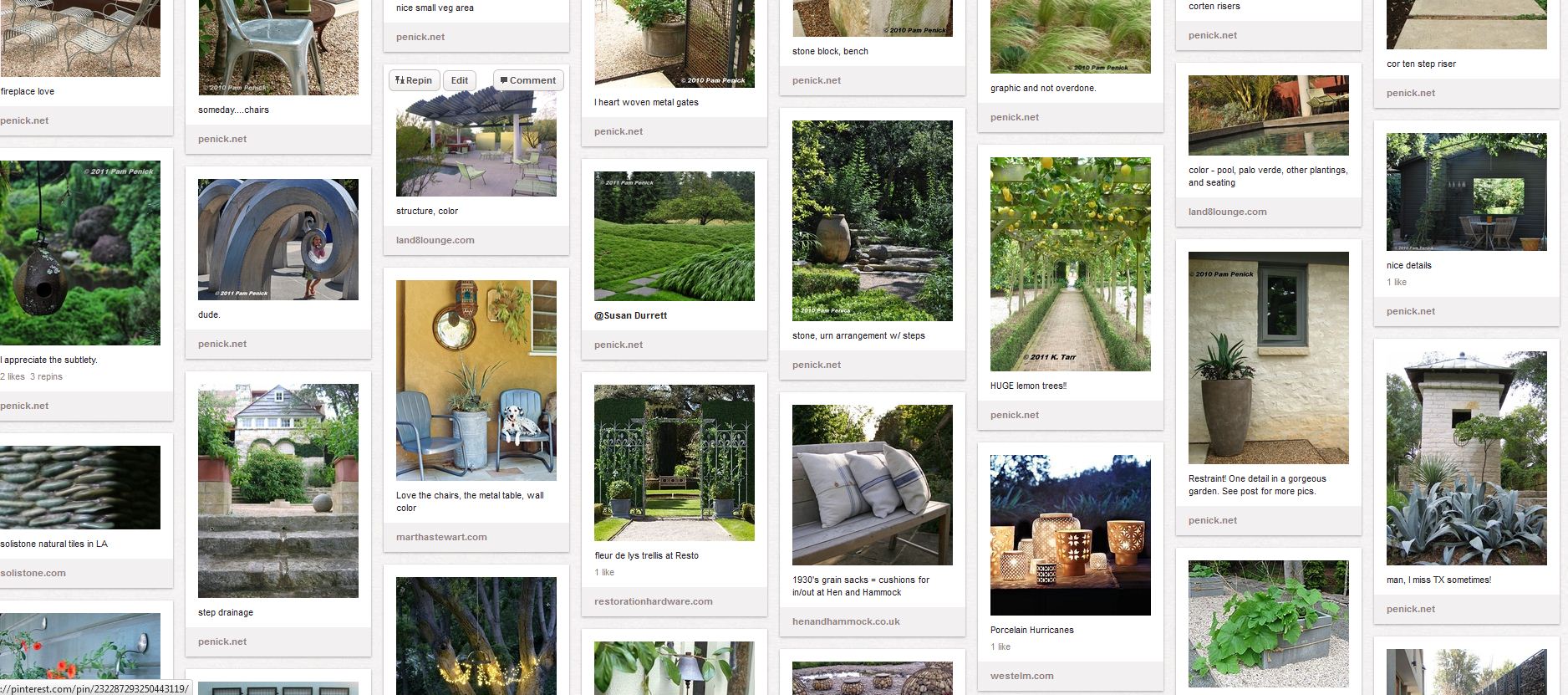 It never occurred to me until recently to use Pinterest.com as a communication tool in collaboration with a client. Granted, Pinterest can’t actually do the design work for me or my client, but it does allow for us to collaborate and understand each other in a common forum....which is proving to be so fun!Pinterest isn’t everyone's favorite tool, but for those who want to collect images and links in a web-based place, it is a lot of fun. Back in the day (like a year ago), I saved links as internet explorer's bookmarks and images were always saved to my hard-drive (which means I don't know where they came from). Now, I have links for non image-heavy things (like articles) on Delicious.com and images (with links!) are on Pinterest. I can access all this stuff as a resource from anywhere there's internet access. That's kinda handy! (What Pinterest is)I’ve only just tried using it with a client recently, and at one of our meetings, I asked what they thought. So far, so good – my client likes being able to share a photo with me, and we add comments back and forth for each other. It is so gratifying to see that my client has started a board for their project, and have “re-pinned” some “pins” from my various boards (with comments!) which helps me zero-in on exactly what they’re responding to.People can "pin" images from anywhere on the internet, and they can also upload images from their own computer... but don't mistake someone's pins for their own design ability or experience. The images come from all over the place, with and without express permission. There is some concern over permissions and Pinterest's user agreement. Several months ago, I did have the experience of re-pinning an image and then getting an email from Pinterest that the owner of that image had requested it be taken down, so they emailed me a link to the source and removed the image from every instance on Pinterest.So- if you're planning a project, or looking for an easier way to share images with your client or designer than saving and e-mailing both a link and the picture, this may be a useful thing for you!If you want to follow my boards, go ahead. I take no credit for the work you see there, though, unless expressly noted as my own.
It never occurred to me until recently to use Pinterest.com as a communication tool in collaboration with a client. Granted, Pinterest can’t actually do the design work for me or my client, but it does allow for us to collaborate and understand each other in a common forum....which is proving to be so fun!Pinterest isn’t everyone's favorite tool, but for those who want to collect images and links in a web-based place, it is a lot of fun. Back in the day (like a year ago), I saved links as internet explorer's bookmarks and images were always saved to my hard-drive (which means I don't know where they came from). Now, I have links for non image-heavy things (like articles) on Delicious.com and images (with links!) are on Pinterest. I can access all this stuff as a resource from anywhere there's internet access. That's kinda handy! (What Pinterest is)I’ve only just tried using it with a client recently, and at one of our meetings, I asked what they thought. So far, so good – my client likes being able to share a photo with me, and we add comments back and forth for each other. It is so gratifying to see that my client has started a board for their project, and have “re-pinned” some “pins” from my various boards (with comments!) which helps me zero-in on exactly what they’re responding to.People can "pin" images from anywhere on the internet, and they can also upload images from their own computer... but don't mistake someone's pins for their own design ability or experience. The images come from all over the place, with and without express permission. There is some concern over permissions and Pinterest's user agreement. Several months ago, I did have the experience of re-pinning an image and then getting an email from Pinterest that the owner of that image had requested it be taken down, so they emailed me a link to the source and removed the image from every instance on Pinterest.So- if you're planning a project, or looking for an easier way to share images with your client or designer than saving and e-mailing both a link and the picture, this may be a useful thing for you!If you want to follow my boards, go ahead. I take no credit for the work you see there, though, unless expressly noted as my own.
I have come to loathe the term "low maintenance". It is essentially meaningless. I am starting to wonder if when a client requests a "low maintenance" design, what they're really saying is that they don't want to do any work themselves, including taking the trouble to find a decent gardener or asking questions.It is imperative for both the client and the designer to discuss exactly what types of gardening activities may occur before doing any design work. Be honest! REALLY! For example, when I got my hair cut last week, I told the stylist that I wash and comb my hair, nothing more. I would not promise to use any appliances or products, and she gave me a cut that works well for my specific needs. You can see from the above photo (taken on my patio earlier this month) that thanks to my personal distaste for weeding, I have a number of (un-planned) plants just growing together, willy-nilly, doing their thing. I am okay with that, so this is the design solution that my personal garden employs. I'll let nearly anything grow as long as it is healthy and doesn't produce anything painful (thorns, burrs, stingers). This works for me because I live in an apartment and I know that if/when I move, the whole thing will be ripped up - there's not much to be gained by fretting over weeds. Given a different situation, my personal garden might look quite different or it might not.I also grow several roses and a few shrubs - some in containers, some not. I grow dozens of rare bulbs, more than dozens of perennials, and a few orchids, but I don't do much "work". Every year I reliably cut Roses, Freesias, and Sweet Peas for indoor bouquets. I know that rose flowers develop at the very end of a branch and that each cut to remove a flower is, in fact, a pruning cut (and where to take that cut). I also know that my Sweet Peas will bloom nearly forever as long as I keep cutting the flowers off - it is just terrible having an apartment full of sweet pea flowers, just awful...
You can see from the above photo (taken on my patio earlier this month) that thanks to my personal distaste for weeding, I have a number of (un-planned) plants just growing together, willy-nilly, doing their thing. I am okay with that, so this is the design solution that my personal garden employs. I'll let nearly anything grow as long as it is healthy and doesn't produce anything painful (thorns, burrs, stingers). This works for me because I live in an apartment and I know that if/when I move, the whole thing will be ripped up - there's not much to be gained by fretting over weeds. Given a different situation, my personal garden might look quite different or it might not.I also grow several roses and a few shrubs - some in containers, some not. I grow dozens of rare bulbs, more than dozens of perennials, and a few orchids, but I don't do much "work". Every year I reliably cut Roses, Freesias, and Sweet Peas for indoor bouquets. I know that rose flowers develop at the very end of a branch and that each cut to remove a flower is, in fact, a pruning cut (and where to take that cut). I also know that my Sweet Peas will bloom nearly forever as long as I keep cutting the flowers off - it is just terrible having an apartment full of sweet pea flowers, just awful...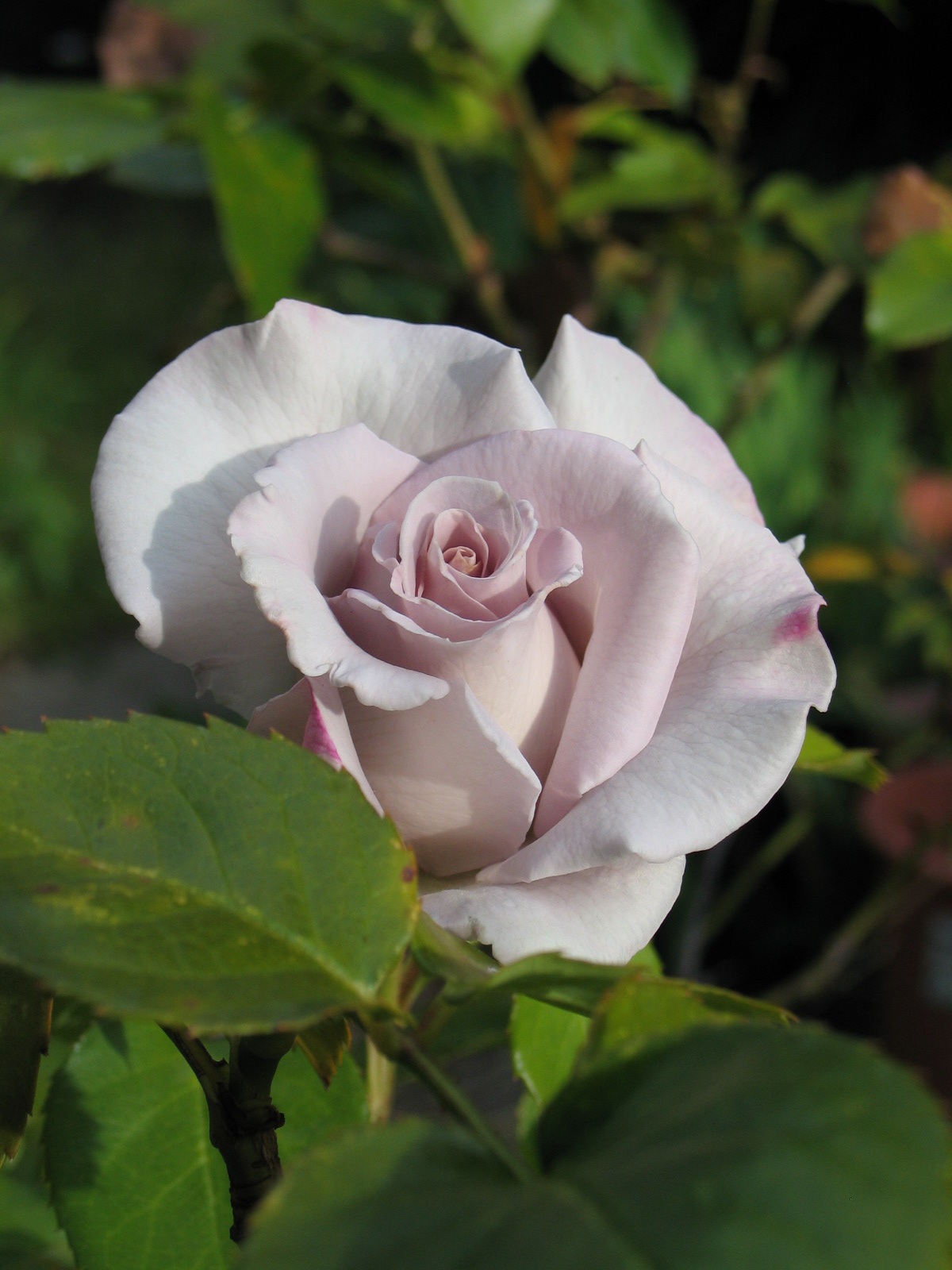 There are countless ways to design a garden so that it doesn't feel like a ton of unwanted work, and so that taking care of it is at least somewhat enjoyable. Getting it to that point is as good a reason as any to work with a design professional and/or do a bit of research for your own garden design solutions....but please don't call cutting flowers "maintenance", that just takes out all the fun.
There are countless ways to design a garden so that it doesn't feel like a ton of unwanted work, and so that taking care of it is at least somewhat enjoyable. Getting it to that point is as good a reason as any to work with a design professional and/or do a bit of research for your own garden design solutions....but please don't call cutting flowers "maintenance", that just takes out all the fun.
I read Studio G's blog often, it is a wonderful source of entertainment for me. I recently stumbled across this post, clicking on it because of the title "Religion & Garden Design". Read it.Reading that gave me the nudge I needed to finally mention associations here, they are powerful and invisible aspects of design work that must never be ignored. The better designers understand that they must get to know their clients so that subtle, personal conflicts of negative associations can be avoided and positive associations used for inspiration. Consider the meaning in shapes, colors, plants, orientation (East/West), and views.For example: when I see Beautyberry (the plant image in Studio G's post) I remember the Dallas Arboretum, visiting my friend Melinda, and working at a wonderful Dallas Landscape Architecture firm with wonderful people.The smell of Tomatoes reminds me of my childhood in Southern California, as does for Australian Tree Fern, Mother Fern, Amaryllis belladonna, Agapanthus, and Tuberous Begonias (especially the orange ones).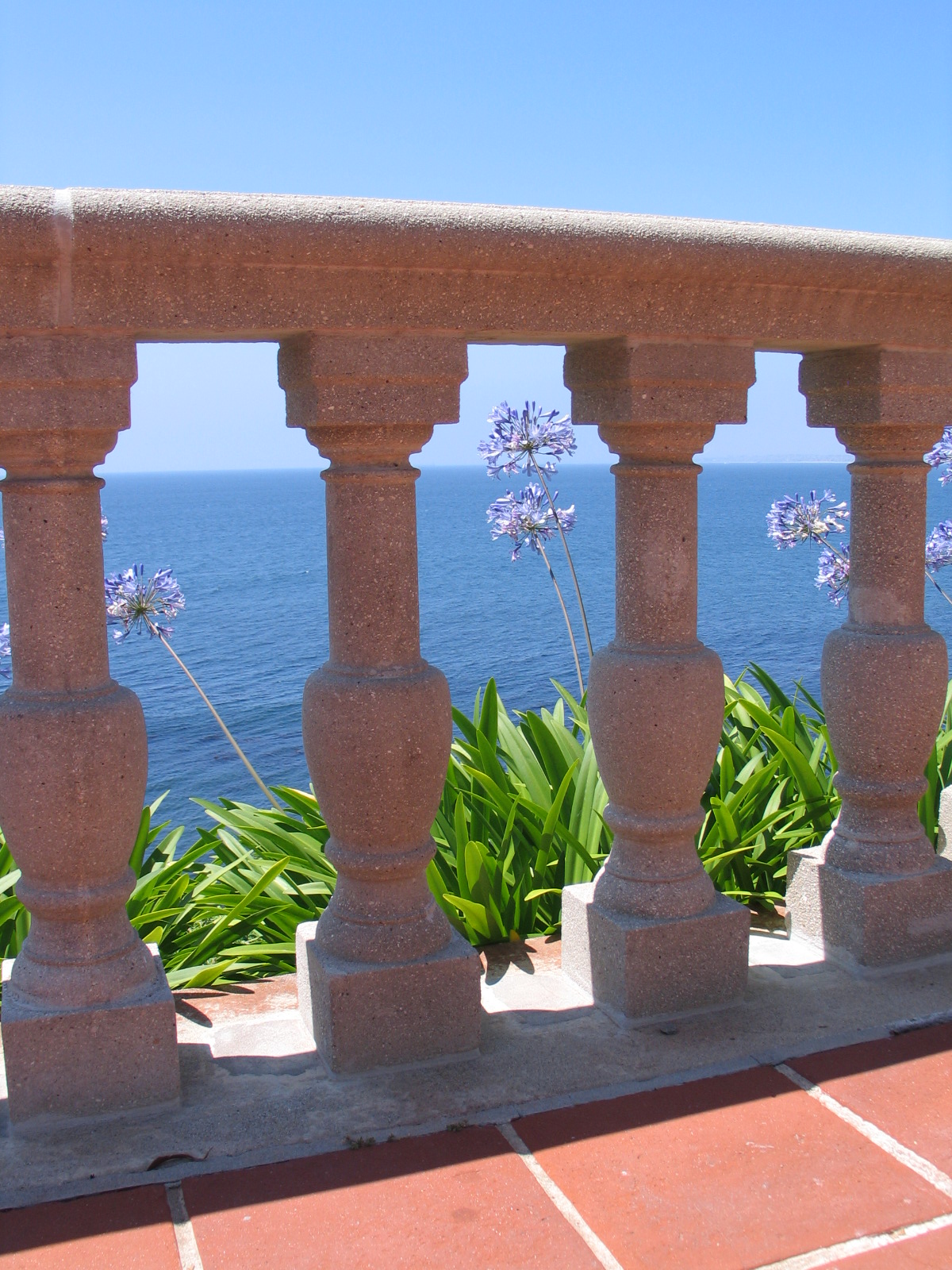 Red and yellow together remind me of Mc Donalds, which I don't think very highly of....I've seen Topher Delaney speak about her landscape work a couple of times, I also met her once at a lunch. At the beginning of a project, she asks her clients to tell her about where they lived when they were little. They have a conversation and get to know each other. She uses this more personal understanding in her design work and succeeds in bringing more meaning to the work than most.So - who are you designing for? ....and how will the design meet their needs, bring meaning, or make it beautiful for the eye of the beholder?
Red and yellow together remind me of Mc Donalds, which I don't think very highly of....I've seen Topher Delaney speak about her landscape work a couple of times, I also met her once at a lunch. At the beginning of a project, she asks her clients to tell her about where they lived when they were little. They have a conversation and get to know each other. She uses this more personal understanding in her design work and succeeds in bringing more meaning to the work than most.So - who are you designing for? ....and how will the design meet their needs, bring meaning, or make it beautiful for the eye of the beholder?
Modative blog post: I receive updates on this architecture firm's blog when they add a new post, and I thought it was interesting when they recently posted about their client questionnaire, so I thought I would share it (please notice that to their credit, they ASK these questions in person). I like their blog and that they are sharing their processes so openly.I still think written questionnaires are a bad idea. I think it is far more important to encourage an open dialog and be responsive to the dynamics of the design process than anything else (some of those answers could change). Also note that only the last question, number 10, opens the door to 'getting to know' the client. Some clients aren't very open, others may give too much information, and they don't always like ideas presented.My first post on client questionnaires gets more traffic than anything else I've written here. I suspect that there are a lot of aspiring designers out there looking for examples of the best questionnaires. I did this, too, early in my career. I've even got a few oldies saved on the computer, but I don't use them.Unlike designing for a public, institutional, or commercial facility, when designing for people's homes, the Owners need to work with someone that they can trust above all else. Someone who will listen and ask questions, then interpret the answers and produce a solution that the client will like (preferably LOVE).Designing for others isn't like any other relationship. The designer needs to get inside the client's head a little, ask some personal questions (about money, lifestyle, privacy concerns, aesthetic preferences). Whether you're designing an interior, structure, or garden, this is an involved and personal process.All clients need to know that you are a professional, but they also need to feel that you care about them and their project. They need to believe that you will treat their investment responsibly, keep private information private, and deliver something beyond their dreams. Developing a relationship that advances the open communication needed is one of the most important skills that a designer can have.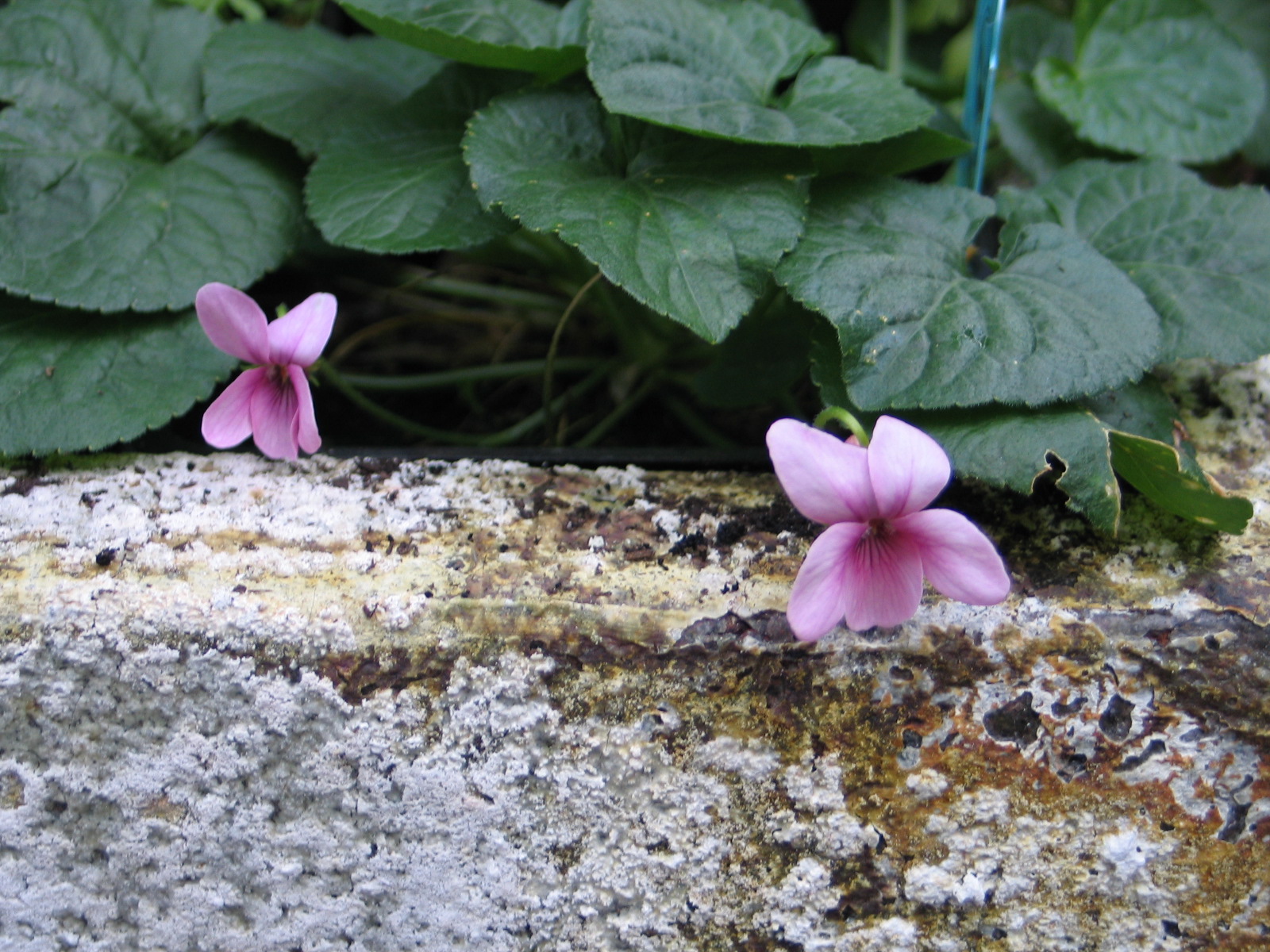 Here's a story from my experience: I once worked for a small design/build firm for a short time. I advanced the design development phase of a large and historically significant home. The Owners were out of town a lot, so it took a while to schedule a meeting, but the company had been working on the project for a while already. I read the correspondence and found the company's client questionnaire. The only notes I found regarding aesthetics were written by the client on the (mailed) questionnaire. They noted that they did not like the color orange or Roses. Okay then - I designed around what would be appropriate for the stately old home, avoiding orange flowers, orange foliage, and Roses. We finally met, and they brought images with them of things that they liked. After some discussion, it became clear that the only images they responded to favorably included chartreuse foliage and white flowers. In fact, they requested that we include shrub roses!!
Here's a story from my experience: I once worked for a small design/build firm for a short time. I advanced the design development phase of a large and historically significant home. The Owners were out of town a lot, so it took a while to schedule a meeting, but the company had been working on the project for a while already. I read the correspondence and found the company's client questionnaire. The only notes I found regarding aesthetics were written by the client on the (mailed) questionnaire. They noted that they did not like the color orange or Roses. Okay then - I designed around what would be appropriate for the stately old home, avoiding orange flowers, orange foliage, and Roses. We finally met, and they brought images with them of things that they liked. After some discussion, it became clear that the only images they responded to favorably included chartreuse foliage and white flowers. In fact, they requested that we include shrub roses!!
My friend and colleague Page Huyette asked me to write a post for her blog as a guest writer. I wrote about editing as part of the design process. Everyone works differently, I think this post illuminates part of my process really well (it should, I wrote it!).Here is the link to that post, and below one of the images (because no blog post should be without pictures!). I took this snapshot one day a few years ago. I had been working for a while and when I "came up for air", I thought that all the stuff on my desk (at Scott Lewis Landscape Architecture) looked interesting together. I'm glad I took the picture, I had no idea it would come in handy some day.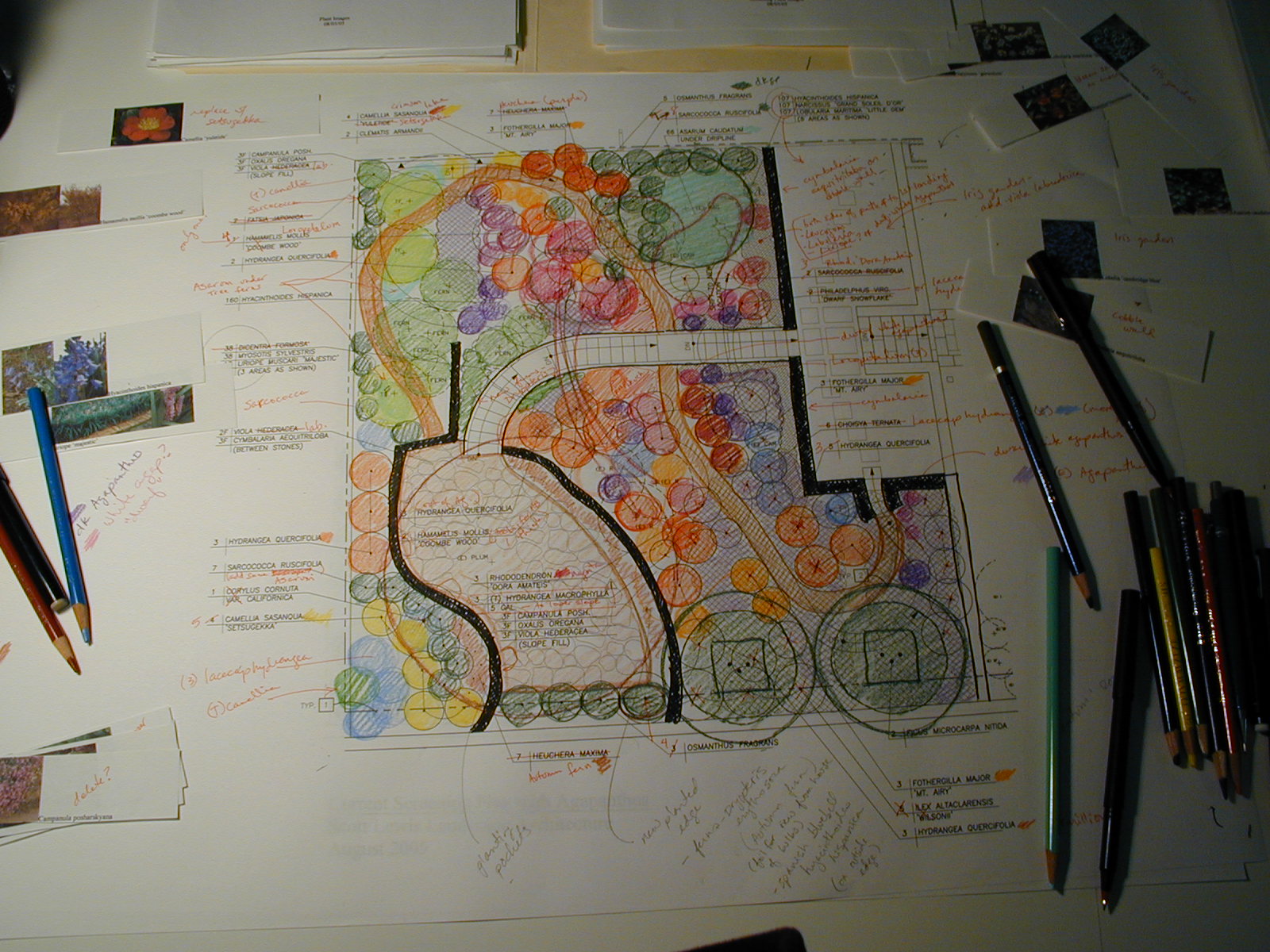 Thanks!
Thanks!
 I try not to assert design "rules" because for every rule, there is likely at least one successful example that breaks it...but I do believe that Filoli is a fantastic place to see occasions when an area in its 'off-season' is beautiful, too.
I try not to assert design "rules" because for every rule, there is likely at least one successful example that breaks it...but I do believe that Filoli is a fantastic place to see occasions when an area in its 'off-season' is beautiful, too. What you are focused on is what you will notice. If you are focused on how much you hate a certain view, guess what? That view will bother you all the time. If you are looking for bare patches of soil, congratulations! Bare soil is what you will find. What would happen if we all adjusted our attention? What if we saw more than bare soil and ugly views?
What you are focused on is what you will notice. If you are focused on how much you hate a certain view, guess what? That view will bother you all the time. If you are looking for bare patches of soil, congratulations! Bare soil is what you will find. What would happen if we all adjusted our attention? What if we saw more than bare soil and ugly views? The paired images here are from Feb 2010 and August 2010.
The paired images here are from Feb 2010 and August 2010.
"Could I request a post on finding and making first contact with a designer for those of us with gardens out of your jurisdiction so to speak? You’ve convinced me that outside help would be a good idea for my yard, but I don’t know where to go for it, and I don’t want to give the wrong first impression by not knowing the right terms."
Read moreAbout 5 years into my career, I left a job working on a wide variety of projects (hospitals, schools, trail systems, public parks, commercial spaces, but very few private residences) for a job that was exclusively private residences and estate work. I thought at the time that I was "looking for the soul" in Landscape Architecture....
Read moreI just got this blog post in my e-mail from Seth Godin this morning which ties in nicely with the book What Your Contractor Can't Tell You that my good friend Susan introduced me to. Nevermind that Mr. Godin uses logo design as his example, and never mind that the book focuses on working with Architects and contractors as opposed to Landscape Architects. BOTH sources discuss the same notion: being a "good" client, or at the very least, an informed one (weirdly, though, they seem to disagree on some points)."Good" clients are beneficial to the entire process, save everyone time, money, and headaches. The responsibility is not the client's alone, however. When the relationship between the client and the professionals they've hired is a productive one, the project always benefits. I am thinking about getting extra copies of that book for my office (knowing full well that suggesting to someone that they read either the post or the book won't necessarily result in them reading either). It is that good. No, really. The $15. you spend on that book can save you thousands in the long and short run. Not a bad return on investment!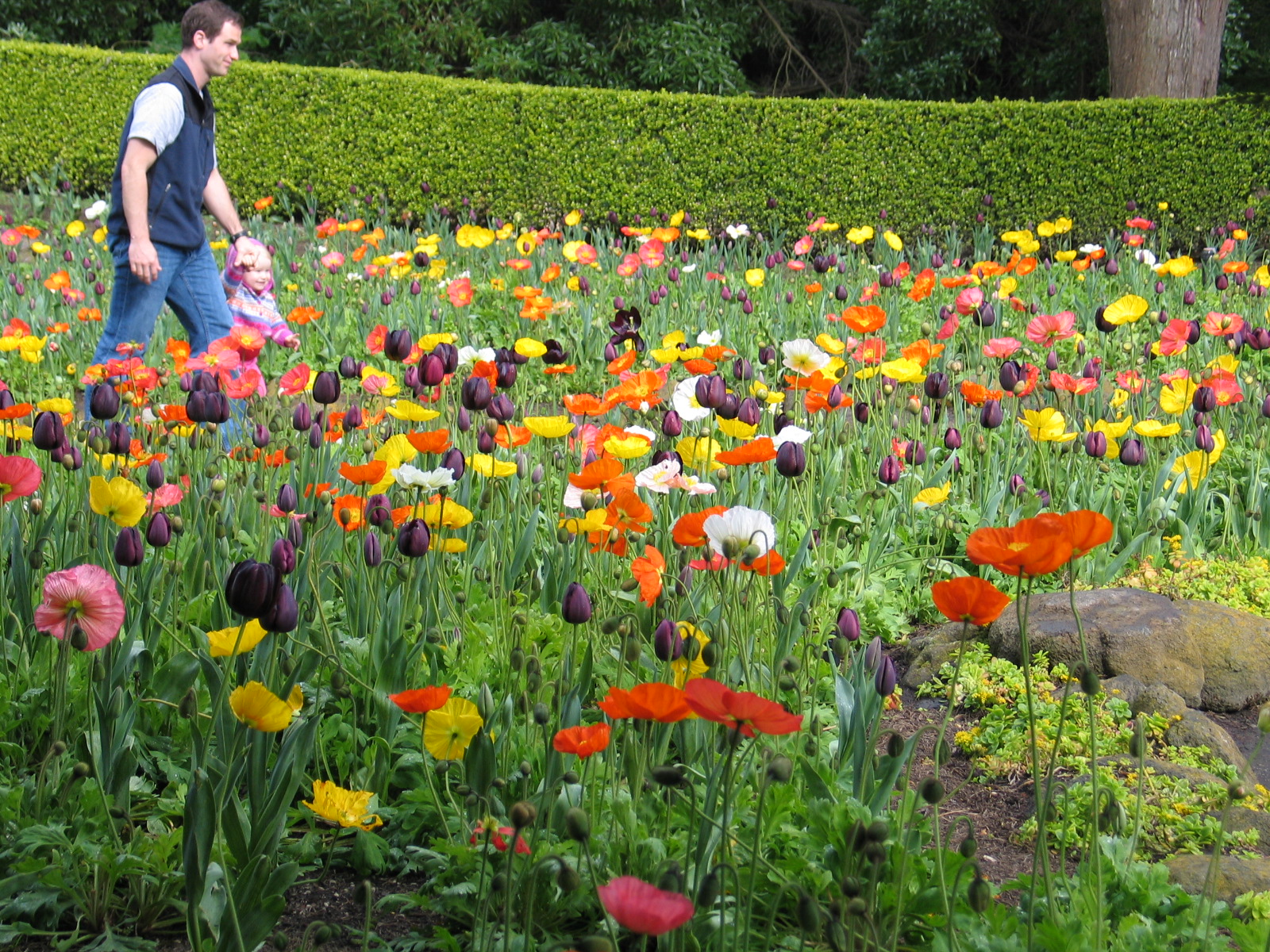 I leave you with images from the Windmill Garden in San Francisco - a seasonal planting that I really enjoyed back in April 2006.
I leave you with images from the Windmill Garden in San Francisco - a seasonal planting that I really enjoyed back in April 2006.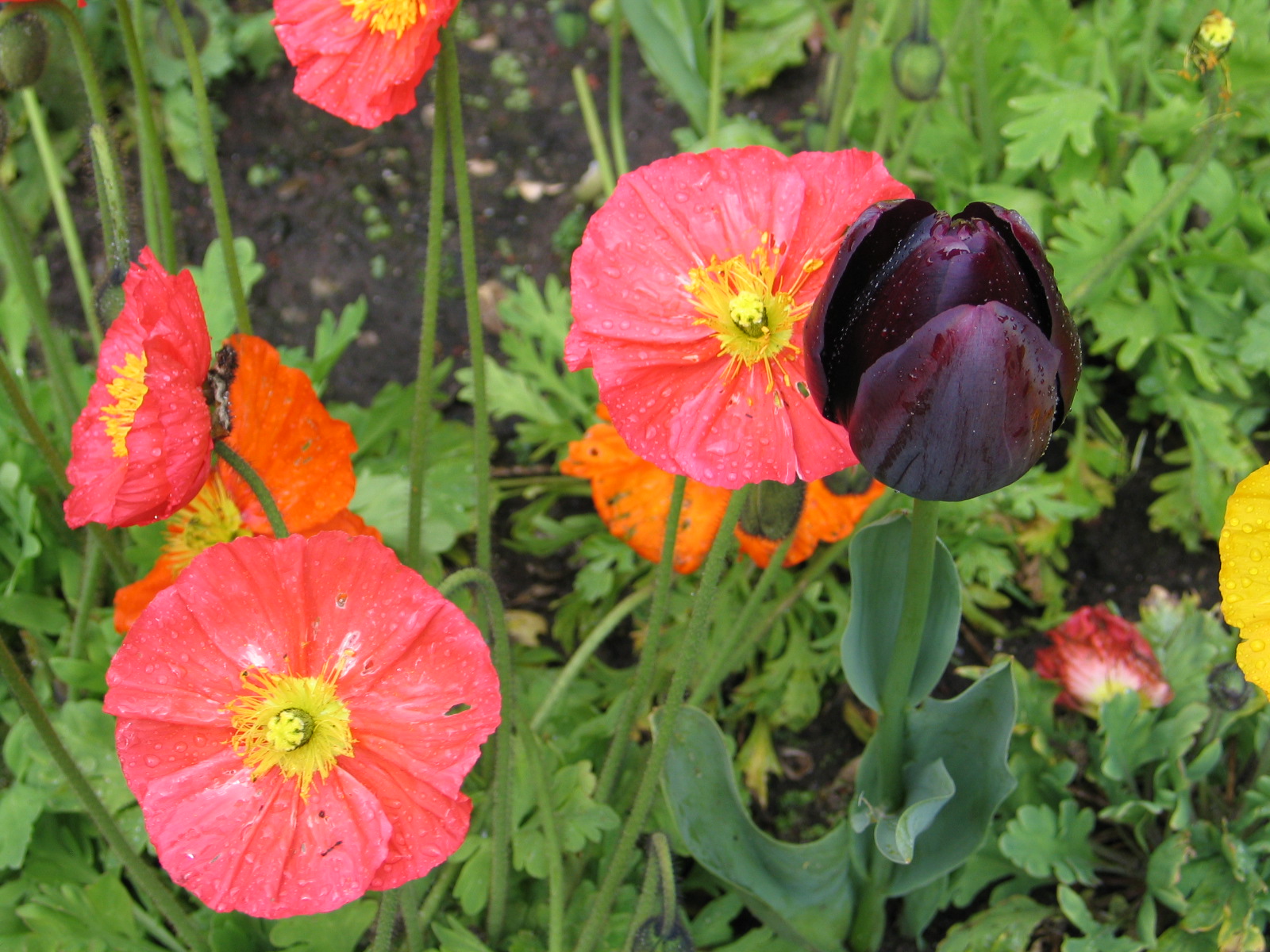
 My mom used to have "naked ladies" (Amaryllis beladonna) in her garden until she dug them all up and gave them to a neighbor. Lucky for me, she had some Nerine bowdenii shoved in a corner of the yard (not planted, just set aside bare) and when I asked if the Amaryllis were all gone, she stuffed the Nerine in a box and gave them to me. Hey, close enough. Every fall when these things bloom, I think of "home" (though I haven't lived there in quite a long time).I've had a few clients with similar hand-me-down plants, and I think these are (depending on the client's wishes, of course) essential to any new design work. How rude would it be if you had a Hydrangea from a loved one's garden (heaven forbid that person is gone!) and I just designed it right out (and oh, yes, I've seen this happen) of the new garden.So below are my Nerine. I'll come clean with you: my yard is a disaster area (no, check that - it is a teensy American Meadow), I haven't done any maintenance since spring, staying inside and working on everything else instead. I live in an apartment, so yes, my friends, the Nerine are living in a kitty litter bucket with holes drilled in the bottom. They don't seem to mind, I pay them absolutely no attention whatsoever and look what they gave me back this year:
My mom used to have "naked ladies" (Amaryllis beladonna) in her garden until she dug them all up and gave them to a neighbor. Lucky for me, she had some Nerine bowdenii shoved in a corner of the yard (not planted, just set aside bare) and when I asked if the Amaryllis were all gone, she stuffed the Nerine in a box and gave them to me. Hey, close enough. Every fall when these things bloom, I think of "home" (though I haven't lived there in quite a long time).I've had a few clients with similar hand-me-down plants, and I think these are (depending on the client's wishes, of course) essential to any new design work. How rude would it be if you had a Hydrangea from a loved one's garden (heaven forbid that person is gone!) and I just designed it right out (and oh, yes, I've seen this happen) of the new garden.So below are my Nerine. I'll come clean with you: my yard is a disaster area (no, check that - it is a teensy American Meadow), I haven't done any maintenance since spring, staying inside and working on everything else instead. I live in an apartment, so yes, my friends, the Nerine are living in a kitty litter bucket with holes drilled in the bottom. They don't seem to mind, I pay them absolutely no attention whatsoever and look what they gave me back this year: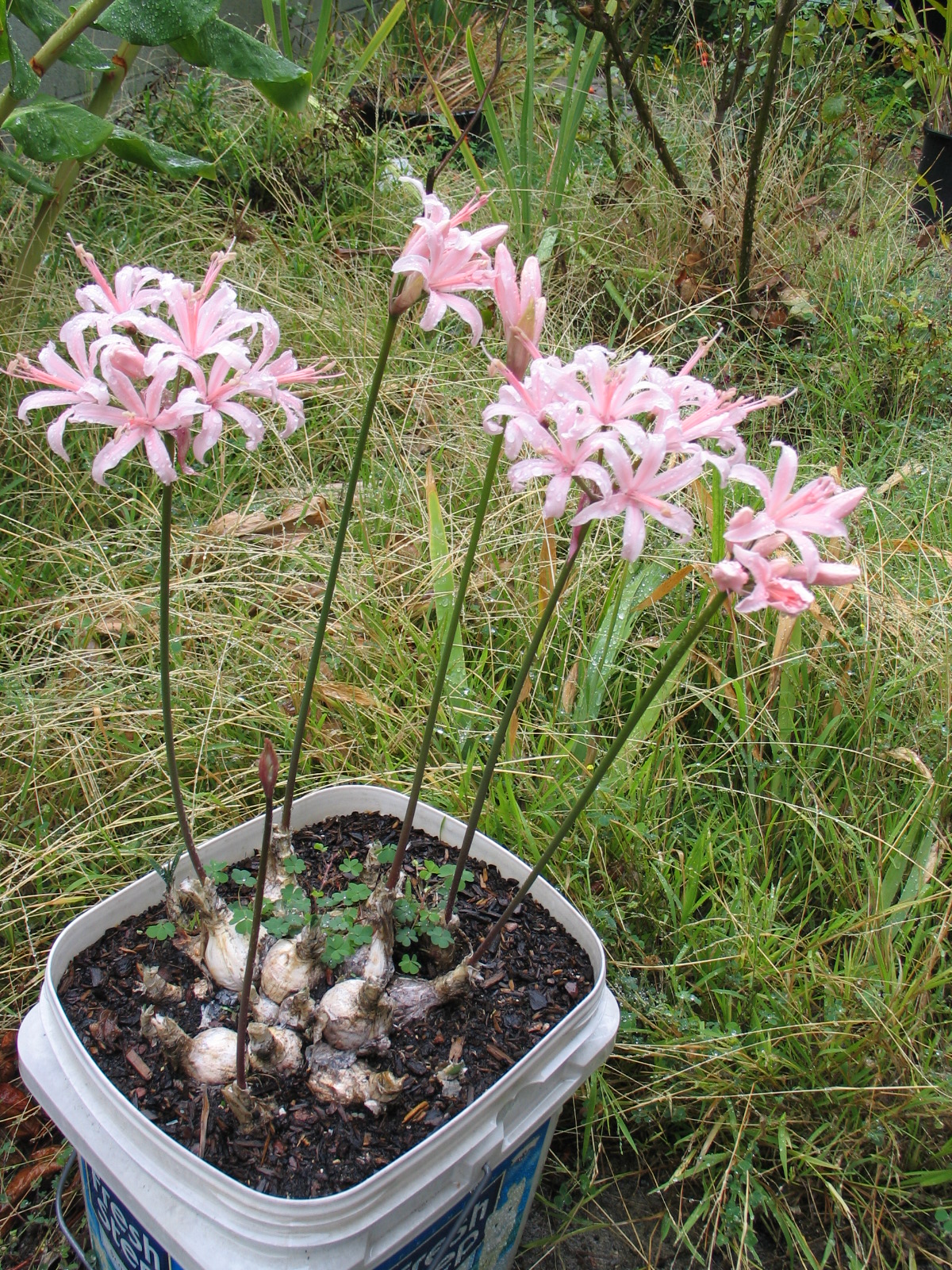

Photo by Aarón Blanco Tejedor on Unsplash
I have decided that I dislike client questionnaires very much. For the purpose of designing a landscape of any sort, they fall far short of useful. I am sure someone somewhere found a client who enjoyed filling out forms, but I have yet to meet any prospective landscape project or client who responded well to (or was well-served by) a written questionnaire.
Read more
Aristea spiralis 4
You took the first step and decided to call someone, I'm glad you found me. Do yourself a favor and start thinking about your project - I will bring my own ideas, what I need to hear are yours. Here's some things to consider and be prepared to chat about when we meet:
Read more
Photo by Andy Beales on Unsplash
Pay close attention to the wording under Landscape Contractor, Nurserypersons, and Unlicensed Persons as opposed to the wording for Landscape Architect.
Read more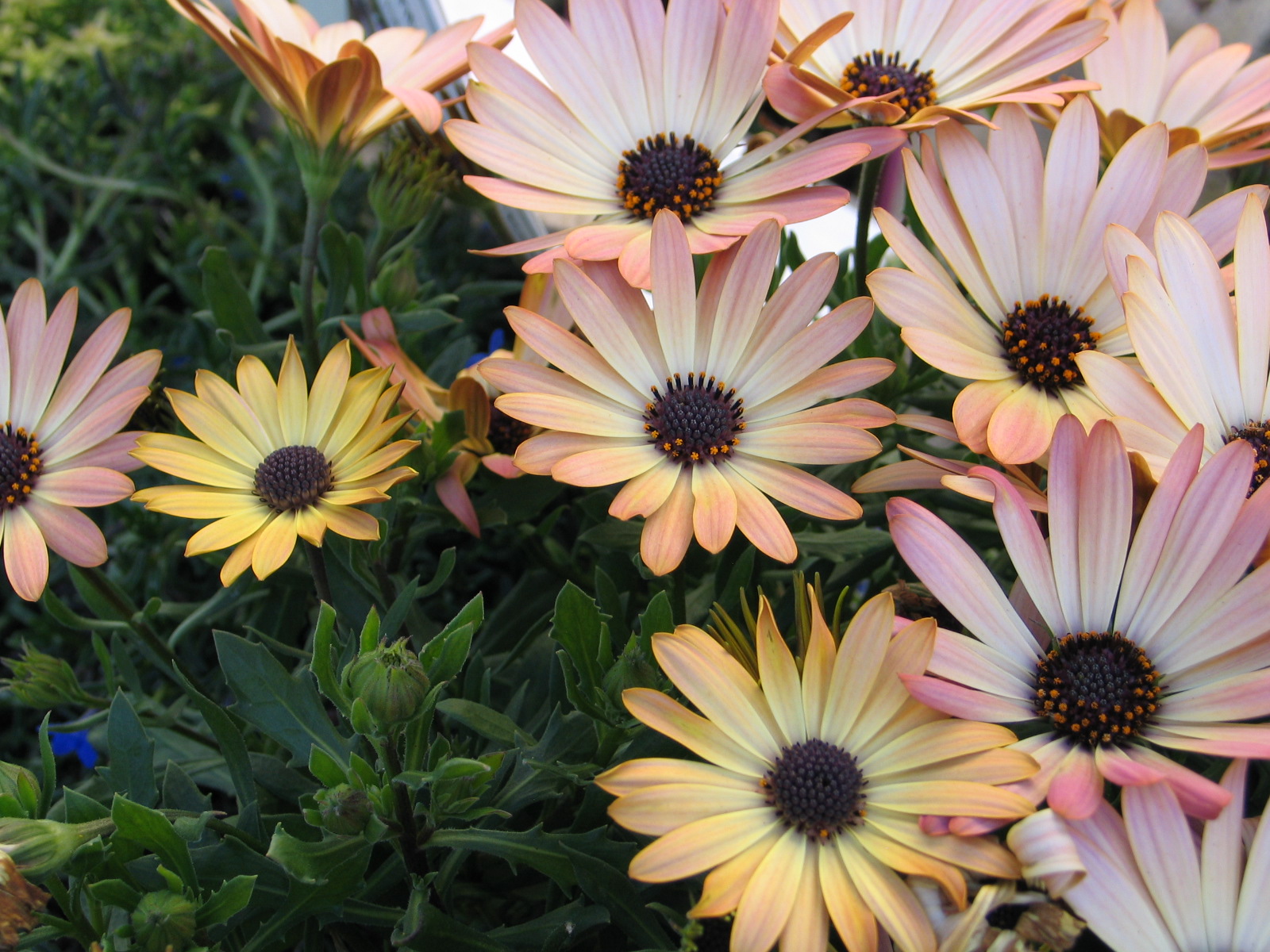
Osteospermum Sunadora 'Palermo' FL 1
I got into the design and Landscape Architecture business because I had one of those 'they pay people to do that?!' moments while looking for a major in college. I've been doodling, daydreaming, and designing as long as I can remember. I recently found a sketch I drew at about age 10 (?) of a pet store layout. I wanted a pet/people introduction room, an educational library, a little garden, a soda machine....I know I did a similar sketch for an imaginary plant nursery a few years later, I just can't find it.The point is that some designers (all of them?) entered their chosen industries because it is what they DO. Naturally. Automatically. All the time. Getting a degree and working in the chosen field for experience is just part of doing it professionally.When you are looking for a designer (of any sort), my personal take on it is that you want to work with someone who you like and who you think might understand you, all the better if that person has good taste. If your preferred designer charges a formidable fee for their time, it may be worth it to negotiate the contract so that you can work with the person you want to work with instead of looking for someone you can "afford". Perhaps that favored designer will sit down with you and brainstorm on the design for an hour or so. A napkin sketch and some notes can be all you need in certain situations. No contract is final until it is signed, see what you can work out!Keep in mind that bad design is just as expensive to install as good design! Unfortunately, it can cost you buckets more in the long run by lowering (at the very least not increasing) your property value.Good design is an investment - one that is just as important as the materials you choose to use and proper maintenance.

pagoda lid flowers contest
How long will it take?Every client wants to know the answer to this question, and most want the answer right up front. Some even want to know before the designer has been to the site. Understandable, but unrealistic.In all honesty, it takes as long as it takes. One factor is coordinating the clients', designer's, and contractor's schedules. Everyone is busy, that is a part of life. There is sometimes a lot of time wasted waiting for meetings - simple math.Deciding: Some clients need more time to ponder decisions than others. It can take a while to get responses to calls made to a variety of consultants, municipalities, etc - research of any kind requires a bit of patience. Never mind the time required for neighbor comment periods in some areas (eeek)! There is also the design work itself and the time it takes to produce the documents needed for each meeting.Scope! Not the mouthwash. If the list of things that the designer and the client are working on together is extensive, that can take some time. It is funny sometimes, how designing for a residence can be as time consuming as for a public park. Projects on such an intimate scale, especially because they are where someone lives, can hold a great deal of meaning and detailing. Details all the way down to the angle of a drain cover in a field of paving are important at this level.Seasons and availability: Oh, my. Availability is one of the biggest stumbling blocks of Landscape Architecture and garden design. Materials come with their own special problems. Finding the materials desired is one thing, making sure that they're available and will meet the specifications is quite another. Stone for paving, depending on where it comes from, can be just as difficult to obtain as an out-of season plant. For instance, bluestone from back east, if still in the quarry, can be hidden under feet of snow for a good part of the year. I once had occasion to reject stone samples coming to California from Oklahoma three times because the ability of the quarry to cut the stone accurately wasn't within accepted tolerances and they persisted in sending samples of the wrong color.Add in the availability of plant materials at different times of the year and the lead times necessary for ordering certain kinds of plants, and it can take a good amount of time to install a garden that has exactly what you wanted. When planning for year-round interest, this can be particularly important. Spring bulbs are ordered in the fall (much cheaper to get the bulbs in the fall than try to find them growing in the spring!), fall bulbs are ordered in the spring. Bare root Roses are ordered in November or December, then delivered in January (here in N. CA). Most nurseries carry plants that are in bloom NOW, whenever now is, so if you are sourcing something through the wholesale or retail nursery trade, that can be pretty limiting.The bottom line? Patience. The design process can happen as fast as the designer can work and the client can respond....the rest is a matter of strategy and patience.